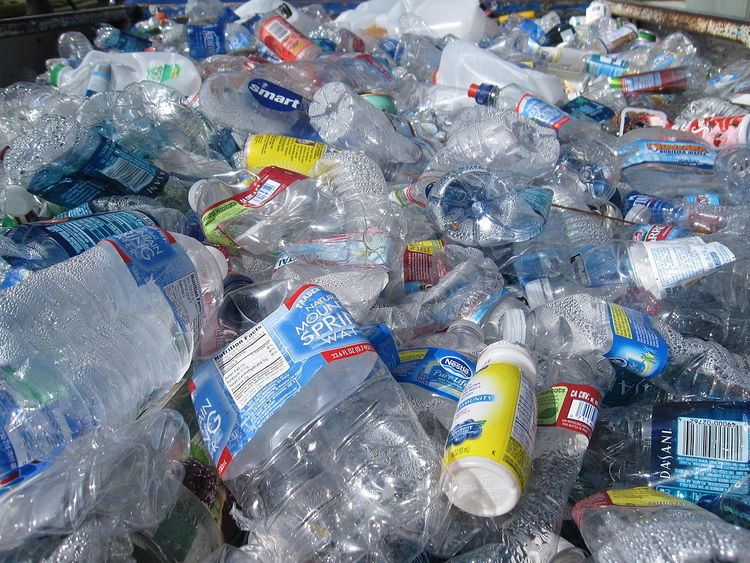 | ||
The ASTM International Resin Identification Coding System, often abbreviated as the RIC, is a set of symbols appearing on plastic products that identify the plastic resin out of which the product is made. It was developed originally by the Society of the Plastics Industry (now the Plastics Industry Association) in 1988, but has been administered by ASTM International since 2008.
Contents
History
The Society of the Plastics Industry introduced the Resin Identification Code (RIC) system in 1988 as a growing number of communities were implementing recycling programs. In order to address the concerns of recyclers across the U.S., the RIC system was designed to make it easier for workers in Materials Recovery and Recycling facilities to sort and separate items according to their resin type. Plastics must be recycled separately, with like materials, in order to preserve the material’s value and enable its reuse in other products after being recycled.
In its original form, the symbols used as part of the RIC consisted of arrows that cycle clockwise to form a triangle that encloses a number. The number broadly refers to the type of plastic used in the product:
When a number is omitted, the arrows arranged in a triangle form the universal Recycling Symbol, a generic indicator of recyclability. Subsequent revisions to the RIC have replaced the arrows with a solid triangle, in order to address consumer confusion about the meaning of the RIC, and the belief that the presence of a RIC symbol on an item does not necessarily indicate that it is recyclable.
In 2008, ASTM International took over the administration of the RIC system and eventually issued ASTM D7611 - Standard Practice for Coding Plastic Manufactured Articles for Resin Identification. In 2013 this standard was revised to change the graphic marking symbol of the RIC from the "chasing arrows" of the Recycling Symbol to a solid triangle instead.
Since its introduction, many have used the RIC as a signifier of recyclability, but the presence or absence of a Code on a plastic product does not indicate whether it is recyclable or not.
Table of resin codes
Source:
Below are the RIC symbols after ASTM's 2013 revision
Consumer confusion
In the United States, use of the RIC in the coding of plastics has led to ongoing consumer confusion about which plastic products are recyclable. When many plastics recycling programs were first being implemented in communities across the United States, only plastics with RIC Codes "1" and "2" (polyethylene terephthalate and high-density polyethylene, respectively) were accepted to be recycled. The list of acceptable plastic items has grown since then, and in some areas municipal recycling programs can collect and successfully recycle most plastic products regardless of their RIC Code. This has led some communities to instruct residents to refer to the form of packaging (i.e. "bottles," "tubs," "lids," etc.) when determining what to include in a curbside recycling bin, rather than instructing them to rely on the RIC. To further alleviate consumer confusion, the American Chemistry Council launched the "Recycling Terms & Tools" program to promote standardized language that can be used to educate consumers about how to recycle plastic products.
Possible new codes
Modifications to the RIC are currently being discussed and developed by ASTM's D20.95 subcommittee on recycled plastics.
In the U.S. the Sustainable Packaging Coalition has also created a "How2Recycle" label in an effort to replace the RIC with that aligns more closely with how the public currently uses the RIC. Rather than indicating what type of plastic resin a product is made out of, the four "How2Recycle" labels indicate whether a plastic product is
The "How2Recycle" labels also encourage consumers to check with local facilities to see what plastics each municipal recycling facility can accept.
